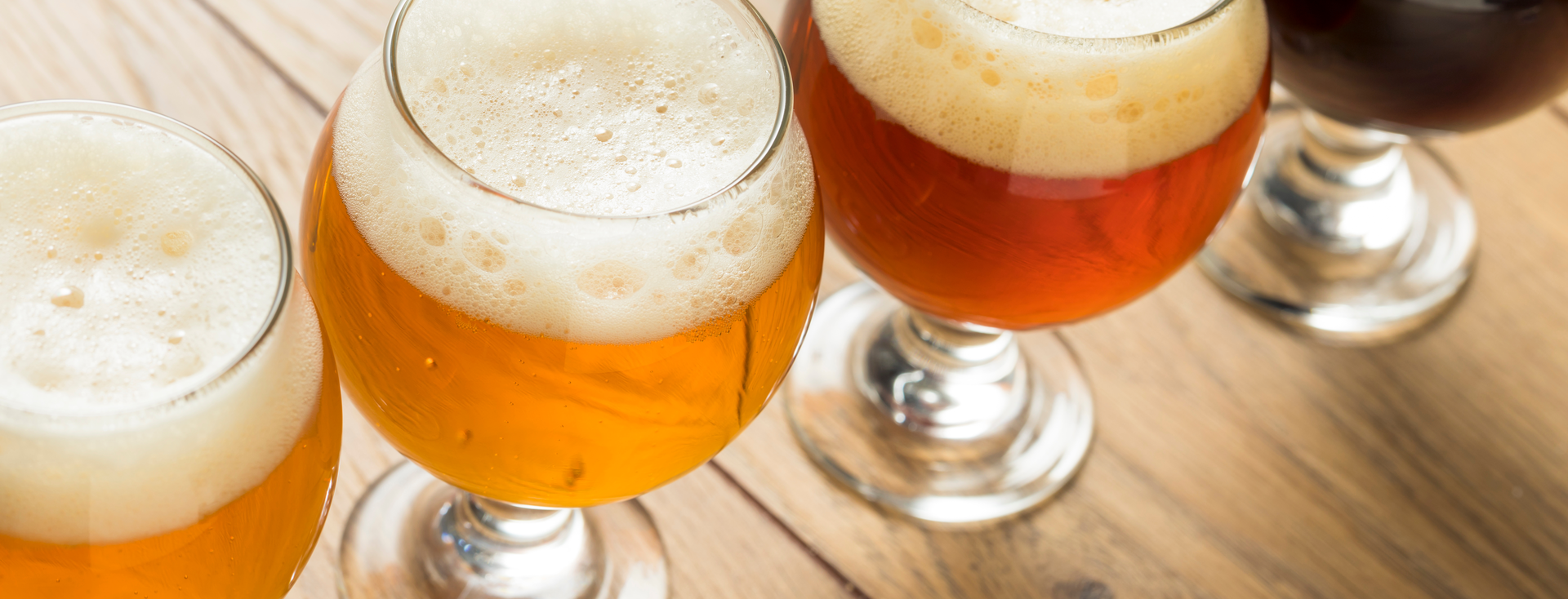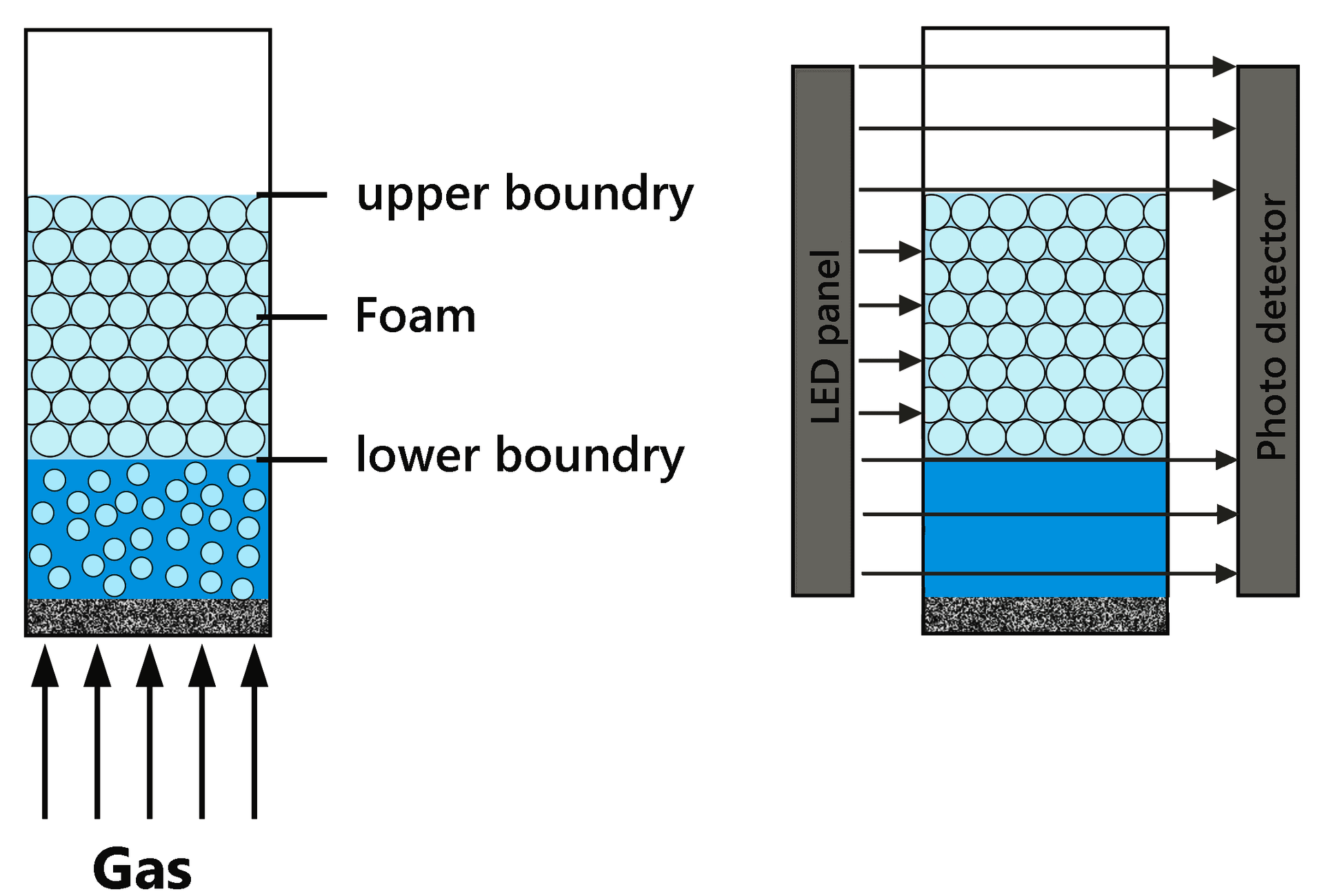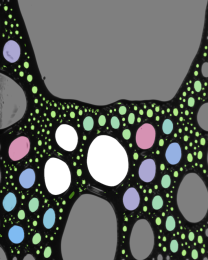
Comparison of the foam behavior of different types of degassed beer
Analysis of the foamability, foam stability and foam structure of beer samples
For a long time food-chemical analyses and quality tests for beer were focused primarily on the biological stability of this popular drink. However, the emphasis in recent years has changed: the brewing industry has developed high and reliable standards with regard to the shelf life of beer, while research and quality assurance focuses increasingly on the aspect of enjoyment [1]. In this connection priority is now also being given to topics such as the formation, consistency and stability of beer foam.
Beer foam forms through the combination of the natural surfactants it contains and the carbon dioxide (CO2) that forms as a reaction product during the brewing process. The latter is not added; the only time additional CO2 is used is during tapping in order to generate the necessary pressure. This study presents a possibility for analyzing the impact of foam-forming substances on foamability and foam stability independently of the CO2 content. For this purpose the foam height and foam structure of the beer types Pils, clear wheat beer and Kölsch, a popular German local specialty beer, were measured with the CO2 having been removed in advance of the measurement. The analysis showed that the behavior of the foam of the beer samples that had been standardized for the measurement deviated greatly from the properties of tapped beers. In particular the behavior of Kölsch beer that only foams a little when tapped was the cause of much surprise during our study.
Background
The proteins contained in beer are what cause the foam to form. These are surface active and thus lead to the formation and stabilization of the foam lamellae. However, it is not quite so simple to compare the impact of foam-forming substances on the foam behavior of different types of beer and different manufacturing methods. The reason for this lies in the differences in the content of the carbon dioxide (CO2) that forms during the brewing process and that, together with the proteins, is involved in the formation of the foam.
Similarly, foam stability does not only depend on the protein content but also on the impact of the CO2, because the solubility of this gas in the water of the foam lamellae accelerates foam decay. The rise of more bubbles from the fluid volumes on the other hand has a stabilizing effect. To enable us to analyze the impact of foam-forming substances independently of these uncontrollable influencing factors we first removed the CO2 from the samples.
For the measurement, we produced foam from the degassed samples by sparging, for which we used air in order to exclude any accelerated destabilization caused by gas solubility. This ensures that differences in the foamability and foam stability in the different types of beer are only linked with the composition of the liquid.
Experimental part
Beer types analyzed
Three types of light beer produced with different brewing processes were analyzed: a clear wheat beer, a Pils and a Kölsch.

The types differ primarily with regard to the cereal malt (wheat or barley) and the yeast used (top or bottom fermented):
| Wheat beer | Pils | Kölsch | |
| Brand | Paulaner Weißbier | Holsten | Reissdorf |
| Yeast | top- fermented | bottom- fermented |
top- fermented |
| Cereal | wheat | barley | barley |
Tab. 1: Beer samples investigated
The foaming behavior of these beers when not degassed is well-known: Wheat beer and Pils form a large amount of stabile foam, while Kölsch tends to foam only slightly with its foam being instable.
Preparation of the measurements
For the degassing process the respective beer was transferred to a device in which the CO2 was withdrawn by means of a vacuum pump equipped with an air extraction valve. This process was repeated for as long as it took for the beer to be virtually completely degassed.
50 mL of each sample was filled into the measuring column of the Dynamic Foam Analyzer – DFA100 with a syringe.
The beer was foamed in a controlled manner by passing air through the samples in the measuring column via a paper filter for 20 s with a computer-controlled constant flow rate of 0.3 L/min. The measurement temperature was 25 °C.
Measurement of foamability and foam stability is effected with the DFA100 by means of a time-dependent measurement of the height of the foam column. This is carried out by means of an LED bar and a photodectector bar arranged respectively along the measuring column. Foamability is calculated on the basis of the maximum height during foaming and stability on the basis of the foam height decay with time. The decay half-life as a characteristic parameter can also be used in addition to the total curve progression to make comparisons between several samples.

To determine reproducibility, at least two measurements were carried out per type of beer.
The Foam Structure Module – FSM was used to enable simultaneous measurement of the foam height and analysis of the foam structure. This module has a special measuring column equipped with prisms and captures the foam lamellae on the wall of the glass with a video camera. The foam structure and its changes over time with regard to bubble size and number are detected by means of video image analysis.

Results
Reproducibility of the measurement curves
The repeat measurements showed extremely good reproducibility of the height curves, as the following example clearly demonstrates. The upper curve indicates the measured total height, the lower curve the height of the liquid column below the foam.

Foamability
Where foamability is concerned there is very little difference between the samples, as can be seen by the only minor differences in maximum foam heights (Fig. 5).

The commonly known high foamability of wheat beer and low foam formation of Kölsch are not reflected in these measurements. It can therefore be concluded that the different foamability properties of the unprepared beers is connected with the different CO2 contents, which played no role in the degassed samples.
Foam stability
The stability behavior of the degassed samples deviated even more significantly from the properties of the beers with CO2. The most striking result here is that of the Kölsch beer, whose foam column declined more slowly than that of the other types (see Fig. 5). This can also be seen in the bar chart depicting the half-life times (Fig. 6), where the half-life of the Kölsch is approximately twice as long as the other types.

It can therefore be concluded that the surfactants in Kölsch beer stabilize the foam lamellae well and the fast foam decay of Kölsch beer after it was tapped results primarily from the influence of the CO2.
Foam structure
As a general rule the decay of foam goes hand-in-hand with a tendency towards the formation of large bubbles and the simultaneous disappearance of small bubbles (Ostwald ripening). This change in bubble size can be observed in all three samples. The following diagram (Fig. 7) shows the change in bubble structure within the first three minutes:
| t [min] | Wheat | Pils | Kölsch |
| 1 |  |
 |
 |
| 2 |  |
 |
 |
| 3 |  |
 |
 |
Fig. 7: Change in foam structure and number of bubbles within the first 3 minutes
Unusual is the fact that the more stable foam of the Kölsch beer is very dynamic in Ostwald ripening at the beginning, i.e. large bubbles form quite quickly. Normally quickly forming bubbles often go hand-in-hand with fast foam decay.
The bubbles counted in the video image analysis for the section observed showed the same initial trend (Fig. 8): the number of bubbles in the Kölsch goes down faster than is the case with the wheat beer and at a similar rate to the Pils.

Despite this the foam height of the wheat beer and the Pils was less stable long-term than that of Kölsch (see Fig. 3). This means that the growth of the bubble size in the case of the first two beers types mentioned leads relatively quickly to bursting. The foam-forming proteins of the Kölsch on the other hand appear to stabilize the large foam lamellae well, so that its fluffy, large-pored foam remains intact for a long time. This result, which is contrary to the behavior of the beer when tapped, suggests that the protein-related stabilization of the Kölsch no longer has any effect when the decay of the foam is influenced by the CO2.
Summary
Three degassed beer samples were tested with the Dynamic Foam Analyzer – DFA100 in order to analyze the influence of the surfactants in the beer independently of the CO2 content and its impact on foam behavior. The foamability, foam stability and foam structure of a clear wheat beer, a Pils and a Kölsch were measured. The findings indicated that the foam behavior of these types was significantly different from the beers when they contained CO2. In particular the Kölsch that forms very little foam when tapped revealed good foamability and foam stability when degassed.
The study made it clear that the foaming behavior of beer in its original state in no way allows any statements to be made about the content of foam-forming substances. Not until measurement has been carried out on samples without CO2 can a comparison of the surface-active proteins be undertaken.
CO2 can also be used for foaming with the DFA100 instead of air. It would therefore be possible to quantify the destabilizing impact of the CO2 solubility in the water of the foam lamellae in a more extensive study.
Bibliography
[1] Hughes, Paul: Improving the non-biological stability of beer, New Food Volume 17, 5 (2014), 30-35.
